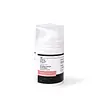What's inside
What's inside
 Key Ingredients
Key Ingredients

 Benefits
Benefits

 Concerns
Concerns

 Ingredients Side-by-side
Ingredients Side-by-side

Water
Skin ConditioningPolymethyl Methacrylate
Butyl Methoxydibenzoylmethane
UV AbsorberEthylhexyl Triazone
UV AbsorberButylene Glycol
HumectantEthylhexyl Methoxycinnamate
UV AbsorberEthylhexyl Salicylate
UV AbsorberPropanediol
SolventOctocrylene
UV AbsorberBis-Ethylhexyloxyphenol Methoxyphenyl Triazine
Skin ConditioningDMDM Hydantoin
PreservativeDibutyl Lauroyl Glutamide
Skin ConditioningMenthyl Lactate
MaskingPPG-26-Buteth-26
Skin ConditioningPEG-40 Hydrogenated Castor Oil
EmulsifyingDibutyl Ethylhexanoyl Glutamide
Skin ConditioningAcrylates/C10-30 Alkyl Acrylate Crosspolymer
Emulsion StabilisingSodium Stearoyl Glutamate
CleansingTriethanolamine
BufferingCI 26100
Cosmetic ColorantSclerotium Gum
Emulsion StabilisingXanthan Gum
EmulsifyingWater, Polymethyl Methacrylate, Butyl Methoxydibenzoylmethane, Ethylhexyl Triazone, Butylene Glycol, Ethylhexyl Methoxycinnamate, Ethylhexyl Salicylate, Propanediol, Octocrylene, Bis-Ethylhexyloxyphenol Methoxyphenyl Triazine, DMDM Hydantoin, Dibutyl Lauroyl Glutamide, Menthyl Lactate, PPG-26-Buteth-26, PEG-40 Hydrogenated Castor Oil, Dibutyl Ethylhexanoyl Glutamide, Acrylates/C10-30 Alkyl Acrylate Crosspolymer, Sodium Stearoyl Glutamate, Triethanolamine, CI 26100, Sclerotium Gum, Xanthan Gum
Water
Skin ConditioningPropylene Glycol
HumectantTerephthalylidene Dicamphor Sulfonic Acid
UV AbsorberButyl Methoxydibenzoylmethane
UV AbsorberPhenylbenzimidazole Sulfonic Acid
UV AbsorberGlycerin
HumectantEthylhexyl Methoxycinnamate
UV AbsorberCaprylic/Capric Triglyceride
MaskingTriethanolamine
BufferingTapioca Starch
Ammonium Acryloyldimethyltaurate/Vp Copolymer
Ethylhexyl Salicylate
UV AbsorberMethylene Bis-Benzotriazolyl Tetramethylbutylphenol
UV FilterDecyl Glucoside
CleansingXanthan Gum
EmulsifyingIsododecane
EmollientSodium Hyaluronate
HumectantCetearyl Olivate
Sorbitan Olivate
EmulsifyingPhenoxyethanol
PreservativeEthylhexylglycerin
Skin ConditioningDicaprylyl Carbonate
EmollientCetearyl Alcohol
EmollientCeteareth-20
CleansingGlyceryl Stearate
EmollientXylitylglucoside
HumectantAnhydroxylitol
HumectantXylitol
HumectantNiacinamide
SmoothingPolyester-7
Skin ConditioningNeopentyl Glycol Diheptanoate
EmollientSodium Polyacrylate
AbsorbentVaccinium Angustifolium Fruit Extract
Skin ProtectingAllantoin
Skin ConditioningEthoxydiglycol
HumectantCapsicum Annuum Fruit Extract
AntimicrobialZinc PCA
HumectantSodium Gluconate
Skin ConditioningTocopheryl Acetate
AntioxidantBHT
AntioxidantWater, Propylene Glycol, Terephthalylidene Dicamphor Sulfonic Acid, Butyl Methoxydibenzoylmethane, Phenylbenzimidazole Sulfonic Acid, Glycerin, Ethylhexyl Methoxycinnamate, Caprylic/Capric Triglyceride, Triethanolamine, Tapioca Starch, Ammonium Acryloyldimethyltaurate/Vp Copolymer, Ethylhexyl Salicylate, Methylene Bis-Benzotriazolyl Tetramethylbutylphenol, Decyl Glucoside, Xanthan Gum, Isododecane, Sodium Hyaluronate, Cetearyl Olivate, Sorbitan Olivate, Phenoxyethanol, Ethylhexylglycerin, Dicaprylyl Carbonate, Cetearyl Alcohol, Ceteareth-20, Glyceryl Stearate, Xylitylglucoside, Anhydroxylitol, Xylitol, Niacinamide, Polyester-7, Neopentyl Glycol Diheptanoate, Sodium Polyacrylate, Vaccinium Angustifolium Fruit Extract, Allantoin, Ethoxydiglycol, Capsicum Annuum Fruit Extract, Zinc PCA, Sodium Gluconate, Tocopheryl Acetate, BHT
Ingredients Explained
These ingredients are found in both products.
Ingredients higher up in an ingredient list are typically present in a larger amount.
Also known as Avobenzone, this ingredient is a chemical sunscreen filter that provides protection in the UV-A range.
Avobenzone is globally approved and is the most commonly used UV-A filter in the world.
Studies have found that avobenzone becomes ineffective when exposed to UV light (it is not photostable; meaning that it breaks down in sunlight). Because of this, formulations that include avobenzone will usually contain stabilizers such as octocrylene.
However, some modern formulations (looking at you, EU!) are able to stabilize avobenzone by coating the molecules.
Avobenzone does not protect against the UV-B range, so it's important to check that the sunscreen you're using contains other UV filters that do!
The highest concentration of avobenzone permitted is 3% in the US, and 5% in the EU.
Learn more about Butyl MethoxydibenzoylmethaneEthylhexyl Methoxycinnamate is an organic compound that provides UVB protection. It often goes by the more common name of octinoxate. It is created from methoxycinnamic acid and 2-ethylhexanol.
Ethylhexyl Methoxycinnamate absorbs UVB rays with wavelengths between 280-320 nm. UV absorbers protect your skin by using chemical reactions to convert UV rays into heat and energy.
UVB (290-320 nm) rays emit more energy than UVA rays. They are capable of damaging DNA, causing sunburns and are thought to be linked to skin cancer.
The state of Hawaii has banned sunscreens containing octinoxate due to its potential impact on coral reefs. More research is needed to bridge gaps in this research. The European Union allows higher levels of octinoxate in sunscreens than the US and Australia.
Ethylhexyl Methoxycinnamate is oil soluble. It is not stable and may lose efficacy when exposed to sunlight.
Learn more about Ethylhexyl MethoxycinnamateEthylhexyl Salicylate is an organic compound used to block UV rays. It primarily absorbs UVB rays but offers a small amount of UVA protection as well.
Commonly found in sunscreens, Ethylhexyl Salicylate is created from salicylic acid and 2-ethylhexanol. You might know salicylic acid as the effective acne fighter ingredient and BHA.
The ethylhexanol in this ingredient is a fatty alcohol and helps hydrate your skin, similar to oils. It is an emollient, which means it traps moisture into the skin.
According to manufacturers, Ethylhexyl Salicylate absorbs UV wavelength of 295-315 nm, with a peak absorption at 307-310 nm. UVA rays are linked to long term skin damage, such as hyperpigmentation. UVB rays emit more energy and are capable of damaging our DNA. UVB rays cause sunburn.
Learn more about Ethylhexyl SalicylateTriethanolamine is an emulsifier and pH adjuster. It is created using ethylene oxide and ammonia. This gives Triethanolamine a nitrogen core and a similar scent to ammonia.
As an emulsifier, it prevents ingredients from separating and enhances texture by adding volume to a product.
PH adjusters are common in cosmetic products. The pH of a product can affect the effectiveness of other ingredients. A product with a high pH may also irritate the skin.
Learn more about TriethanolamineWater. It's the most common cosmetic ingredient of all. You'll usually see it at the top of ingredient lists, meaning that it makes up the largest part of the product.
So why is it so popular? Water most often acts as a solvent - this means that it helps dissolve other ingredients into the formulation.
You'll also recognize water as that liquid we all need to stay alive. If you see this, drink a glass of water. Stay hydrated!
Learn more about WaterXanthan gum is used as a stabilizer and thickener within cosmetic products. It helps give products a sticky, thick feeling - preventing them from being too runny.
On the technical side of things, xanthan gum is a polysaccharide - a combination consisting of multiple sugar molecules bonded together.
Xanthan gum is a pretty common and great ingredient. It is a natural, non-toxic, non-irritating ingredient that is also commonly used in food products.
Learn more about Xanthan Gum